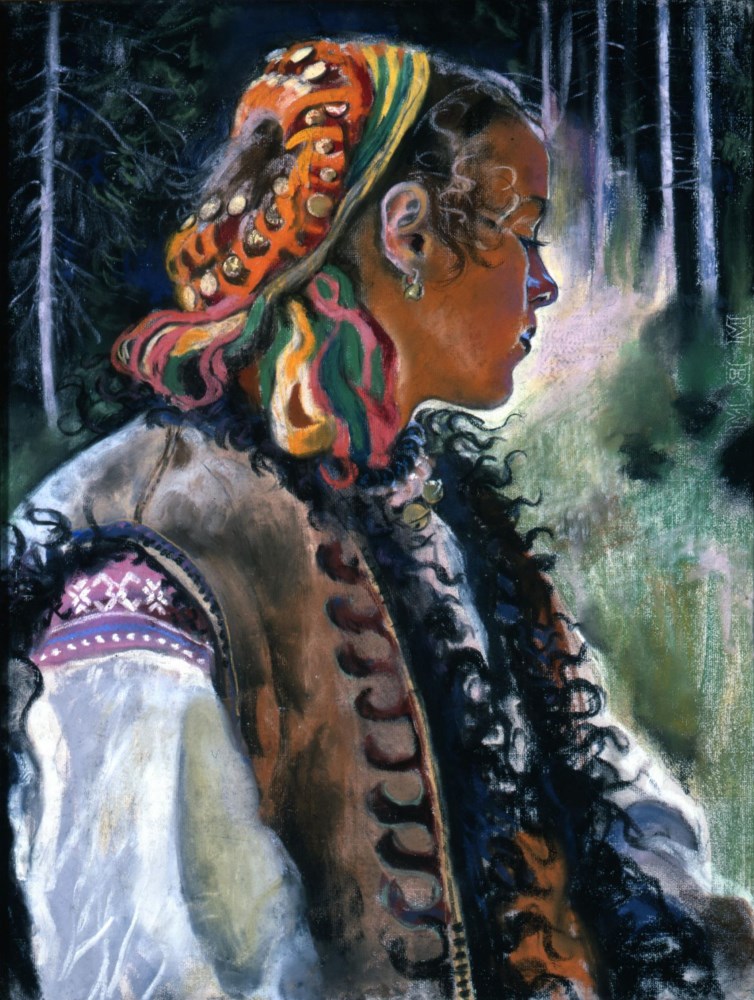Description:
Kazimierz Sichulski (1879-1943) graduated from the Academy of Fine Arts in Krakow. In 1904 he traveled around Europe, getting to know contemporary artistic trends. In 1905 he arrived in Huculszczyzna, which became an inspiration for his work. Traveling through the Carpathian foothills, he often portrayed the local highlanders. This resulted, among other things, in the three portraits presented in the Gallery, which are another reflection of the Young Poland fascination with the life of simple people. Rogalin’s portraits of the Old and Young Hucuł and the young Hucułka were created during Sichulski’s first trip to Huculszczyzna. Exhibited shortly after his return at the Krakow Society of Friends of Fine Arts, they aroused the interest of critics, but also of the chairman of the Society, Edward Alexander Raczyński, who purchased them for his Gallery*.
Description of the painting:
The portraits are composed like a photographic frame – the figures dressed in traditional Hucul costumes fill almost the entire canvas. The background on which they are shown is blurry and blurred. The portraits are filled with intense colors that combine to form a coherent whole. The artist used pure colors that are combined with muted elements. The combination of colorful characters with the green of the mountain vegetation emphasizes their origin and unity with nature, in which they live. The contours of the figures are clear, filled with color patches, which is reminiscent of the way stained glass windows are composed, which also fell into the scope of the artist’s artistic activities. The canvas appears to emanate light that emphasizes the figures, which are also subject to light phenomena. The stylistics of the paintings, through a wavy contour, refer to the Art Nouveau present in this period.
The portrait of the “Young Hucułka” shows a woman in a profile view (quarter profile). Placed sideways to the observer / painter, she seems to turn away from him. She is dressed in the characteristic Hucul costume – an embroidered shirt – soroczka, and on it keptar – a dark leather jacket with fur elements. Her neck is decorated with coral bells. The viewer’s eye is attracted by the strongest color element of the work – the scarf, which is exposed by the adopted posture of the woman. Created with intense, pure colors, it is decorated with small medals reflecting the light. Under it, curls of hair framing the face, which is highlighted by a white, luminous spot, are visible. The figure is shown against the background of trees.


